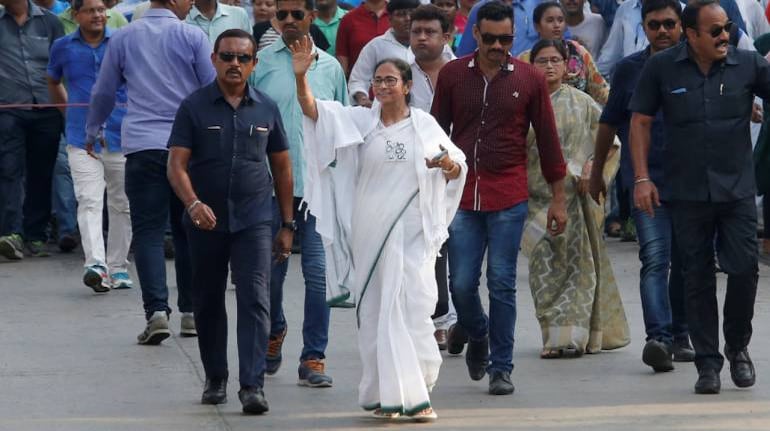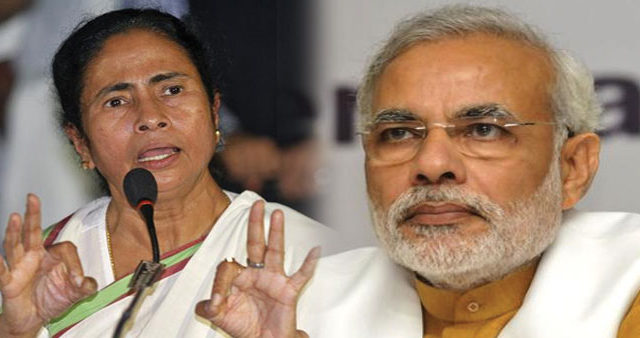10 factors that will impact West Bengal elections

The BJP has painted the TMC with the minority appeasement brush. With the Muslims backing Mamata Banerjee, there is a high probability of the Hindus standing with the BJP
The West Bengal assembly elections are due in April-May. After an impressive show in the 2019 general elections, the Bharatiya Janata Party (BJP) is confident of breaching the Trinamool Congress’s (TMC’s) stronghold.
On the other hand, West Bengal Chief Minister and TMC leader Mamata Banerjee hopes to ride home banking on her development work, sub-nationalism and the backing of minorities. The Left parties and the Congress Mahajot hope to get back some of votes they lost to the BJP in 2019 and emerge kingmakers.
Here are 10 factors that will determine the outcome of this election.
The popularity of the Chief Minister is one such factor. Banerjee will be evaluated by the voters in comparison to the chief ministerial candidates of the BJP and the Left-Congress combine. Herein lies the biggest dilemma of the BJP. Should the party declare its CM candidate? It doesn’t have a leader to match the charisma of Banerjee. Former Indian cricket captain Sourav Ganguly, who is allegedly being wooed by the BJP, hasn’t revealed his political plans.
From 2014 to 2019, the BJP won nine states being in Opposition, having declared a chief ministerial face only in two states: Assam and Himachal Pradesh. Its biggest victory in Uttar Pradesh was without a face. Thus, the West Bengal elections are going to be a Narendra Modi versus Mamata Banerjee contest.

TMC distances itself from ‘goli maaro’ slogan raised at Jan 19 rally
A second factor is the satisfaction level of the voters with the current dispensation. The TMC’s performance on various parameters such as health, education, economy, law and order, etc. will be evaluated, on how the TMC’s tenor was vis-à-vis the Left’s rule, and how Bengal is performing when compared to other states.
A third factor is the ‘index of opposition unity’ popularised by senior journalist Prannoy Roy. In West Bengal, the two main opposition blocks, the BJP and the Left-Congress combine are rivals at national level. In all seats there is likely to be a triangular contest and the TMC could benefit by the split of opposition vote — similar to what happened to the National Democratic Alliance in Bihar.
A fourth factor is the vote cutter. The All India Majlis-e-Ittehad-ul-Muslimeen (AIMIM) which spoiled prospects of the Mahagathbandhan in few seats in the recent Bihar polls has announced it would contest the 100-odd minority influenced seats. The fight for the Muslim vote, which is 27 percent of the population, has intensified with the AIMIM’s entry.
The fifth is the caste arithmetic factor. Banerjee, in 2011, and then the BJP in 2019, have somewhat succeeded in converting a class-based election into a caste-based one. The BJP made big inroads in the SC-ST (30 percent), the OBC and the General (40 percent) vote bank by working on the Matuas and bhadralok. A section of the Matuas who hold considerable clout in 40-45 seats are reportedly unhappy with the BJP due to tardy progress on the Citizenship Amendment Act (CAA) and granting them permanent citizen rights.
The era of the anti-incumbency vote firmly back, with only nine out of 36 state governments during 2014-2020 have come back to power. Here, the role of turnout, which is the sixth factor, assumes significance. If West Bengal records a very high polling percentage, any big movements could have repercussion on the results.
The seventh factor is the Modi factor. For the BJP to win, he needs to draw more voters from the Left and the TMC. Modi’s ability to sell the ‘double engine ki sarkar’ story could decide the BJP’s fortunes. The economic distress inflicted on the people due to COVID-19 has also impacted the state’s finances, and they need central assistance to tide through these tough times.
The eight factor is the level of polarisation unseen in West Bengal politics. The BJP has painted the TMC with the minority appeasement brush. With the Muslims backing Banerjee, there is a high probability of the Hindus standing with the BJP.
The ninth factor is Bengali pride. The TMC has launched the ‘amra verus ora’ (insider versus outsider) campaign showcasing the BJP as a party of North Indians who have no knowledge and regard for the rich culture and heritage of West Bengal. It is harping on regional nationalism to counter the BJP’s Hindu nationalism.
The tenth factor is the brewing rebellion within the TMC. After the exit of Suvendu Adhikari, many MLAs are expected to jump ship indicating which way the wind is blowing. How much Adhikari helps the BJP make inroads in South Bengal will be keenly watched?
A very high pitched election campaign is on the cards.



